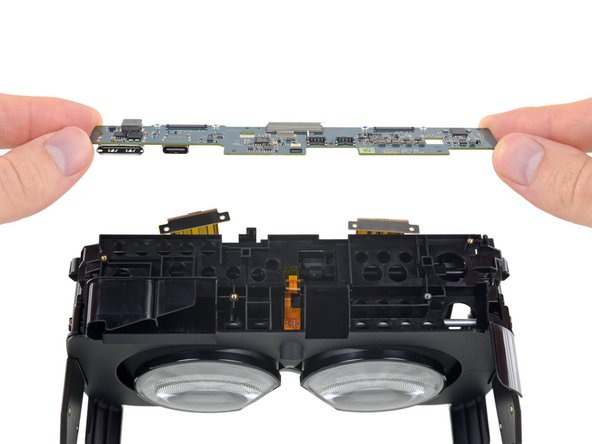crwdns2935425:09crwdne2935425:0
crwdns2931653:09crwdne2931653:0






-
After that brief board break, we continue our journey into the headset.
-
Now tethered by just two headphone interconnect cables, the headset is easily lifted away and set aside.
-
Where the original Vive kept nearly all its onboard silicon clustered onto a single board, the sequel uses two smaller boards. This daughterboard services the displays, I/O, and one or two other things we'll show you in just a moment.
-
This board also hosts the little linear potentiometer that formerly lived on its own FPC. That small slider tracks where you position the displays when making IPD adjustments.
crwdns2944171:0crwdnd2944171:0crwdnd2944171:0crwdnd2944171:0crwdne2944171:0